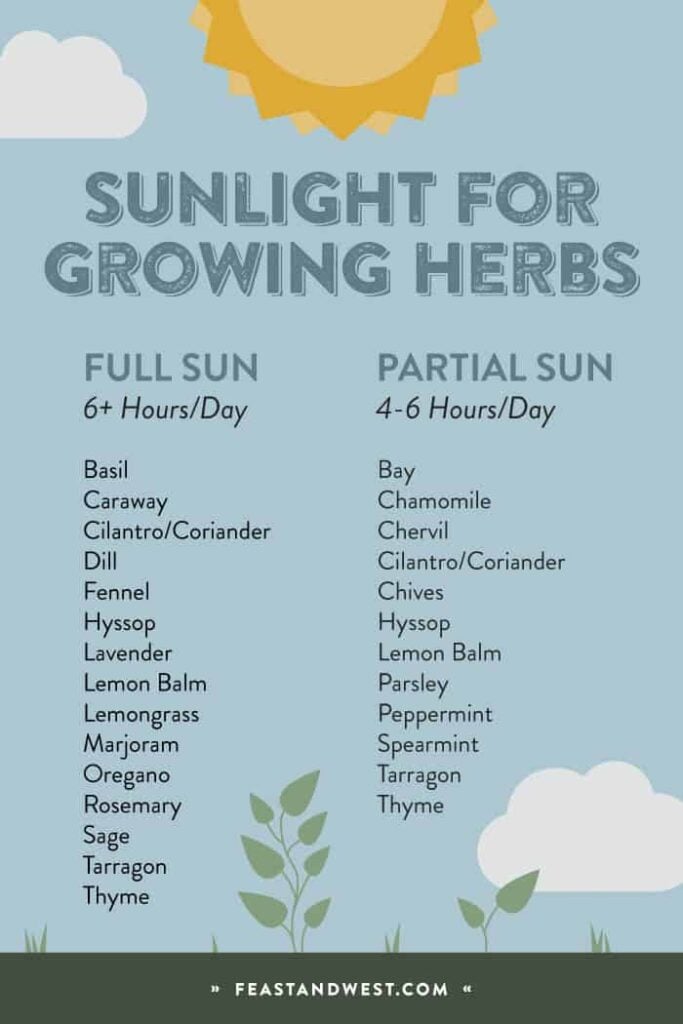Introduction
Growing a thriving herb garden starts with understanding the role of sunlight. Sunlight is essential for photosynthesis, which fuels the growth and flavor of your herbs. But how much sun do herbs actually need? This article dives deep into the relationship between sun exposure and herb gardening success, helping you optimize your garden space for lush, flavorful herbs.
We will cover the ideal sunlight requirements, explain how different herbs respond to sun or shade, and share practical tips to maximize sunlight for your herb garden. Whether you’re gardening indoors or outdoors, this guide offers expert insights and actionable advice to help you grow healthy, aromatic herbs.
How Much Sunlight Do Herbs Need?
Full Sun vs. Partial Sun vs. Shade
Herbs generally fall into three categories based on their sunlight needs:
- Full Sun: At least 6 hours of direct sunlight daily. Most herbs like basil, rosemary, thyme, and oregano thrive under full sun.
- Partial Sun/Shade: 3 to 6 hours of sunlight. Herbs such as parsley, mint, and chives prefer partial sun and can tolerate some shade.
- Shade: Less than 3 hours of direct sun, often filtered light. Some delicate herbs like cilantro can manage in shaded conditions but may become leggy.
Why Sunlight Matters
Sunlight drives photosynthesis, which helps herbs produce essential oils responsible for their aroma and taste. More sun typically means stronger flavors and healthier plants. However, too much sun in hot climates can cause scorching or drying out, so balance is key.
Best Sunlight Conditions for Popular Herbs
Full Sun Lovers
- Basil: Needs 6–8 hours of sun; boosts oil production that enhances flavor.
- Rosemary: Thrives in bright, sunny spots; drought-tolerant once established.
- Thyme and Oregano: Prefer full sun to develop robust, earthy flavors.
Partial Sun and Shade Tolerant Herbs
- Parsley: Does well in partial shade; can bolt quickly in intense sun.
- Mint: Can grow in sun or shade but prefers some afternoon shade to avoid leaf scorch.
- Chives: Adaptable; partial sun encourages vibrant green leaves.
Adjusting for Climate
In hotter zones, herbs that prefer full sun may benefit from afternoon shade to prevent leaf burn. Conversely, in cooler climates, maximizing sun exposure helps herbs flourish.
Tips to Maximize Sunlight for Your Herb Garden
- Choose the Right Location: Place your herb garden where it receives the optimal amount of sun based on the herbs you grow.
- Use Reflective Surfaces: Light-colored walls or stones can reflect sunlight onto plants, increasing light intensity.
- Elevate Containers: Raise pots to capture more light if ground-level is shaded.
- Prune Surrounding Plants: Trim back larger plants or trees that cast shade over your herbs.
- Rotate Plants: Move potted herbs periodically to ensure even sun exposure.
Common Sunlight Mistakes and How to Avoid Them
- Overexposure: Intense afternoon sun can scorch leaves; provide shade cloth or move containers during peak heat.
- Underexposure: Insufficient sun leads to weak growth and bland flavor. Use grow lights indoors or select more shade-tolerant herbs.
- Ignoring Microclimates: Small garden variations can impact sunlight; observe your garden throughout the day to identify the best spots.
Conclusion
Sunlight is a cornerstone of a successful herb garden. Understanding how much sun your specific herbs need and adapting to your local climate can dramatically improve your harvest’s quality and quantity. By selecting the right location, managing sun exposure, and adjusting care practices, you can cultivate a vibrant, fragrant herb garden year-round. Remember, the right balance of sun not only nurtures plant health but also enhances the flavorful oils that make herbs so valuable in cooking and wellness. Start observing your garden’s light patterns today and adjust accordingly to grow your best herbs yet!
